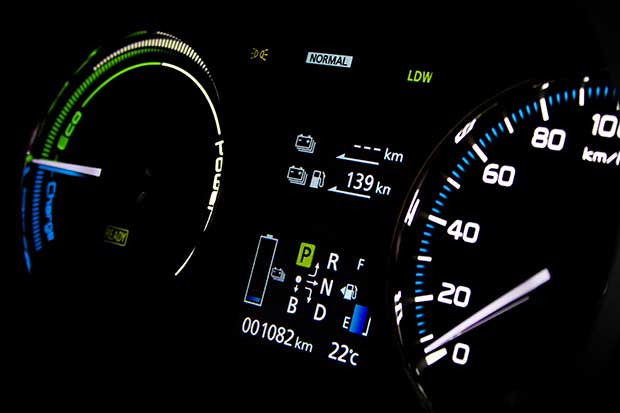15 April 2019
Fleets can avoid Advisory Fuel Rate ‘pitfalls’ by utilising actual cost reimbursement
Businesses can avoid ‘pitfalls’ surrounding the use of HMRC Advisory Fuel Rates for company car drivers and car allowance recipients by instead using ‘actual cost reimbursement’.

- Company car drivers out of pocket by Advisory Fuel Rate changes, says TMC.
- Drivers of small petrol cars are affected the most.
- Actual cost reimbursement could be more cost-effective than Advisory Fuel Rate.
Utilising ‘actual cost reimbursement’ - price paid for fuel divided by vehicle MPG multiplied by number of miles - does require accurate records to be kept detailing business mileage and fuel spend.
However, with an ever-increasing number of vehicles being fitted with telematics devices and the use of other technology that records vehicle mileage, including business and private mileages, being widespread ‘actual cost reimbursement’ is said to be more accurate than the flat Advisory Fuel Rate.
What’s more it is claimed that adopting ‘actual cost reimbursement’ can be used by employers to encourage drivers to filling-up at forecourts selling the ‘cheapest’ fuel and adoption of a driving style that encouraged improved MPG.
HMRC publishes Advisory Fuel Rates quarterly. The current ones for petrol and diesel engined cars with the December 2018-February 2019 quarter in brackets are:
| Petrol | Diesel |
|---|---|
| 1400cc or less - 11p (12p) | 1600cc or less - 10p (10p) |
| 1401cc-2000cc - 14p (15p) | 1601cc-2000cc - 11p (12p) |
| Over 2000cc - 21p (22p) | Over 2000cc - 13p (14p) |
With five of the six rates cut by 1p, TMC (The Miles Consultancy), the fuel management and business trip data company, argues that Advisory Fuel Rates fail to fully reimburse drivers.
Managing director Paul Hollick, who is also chairman of fleet decision-maker training organisation ICFM, said there was more to consider then “just pump prices” when employers reimbursed drivers.
He said: “The MPG vehicles are achieving largely affects the cost per mile. As a result, many drivers are not recuperating their full fuel costs.”
To assess the impact of current Advisory Fuel Rates, TMC analysed detailed fuel card transaction data and audited mileage reports from a sample of 10,000 cars on its mileage capture database. The price of petrol and diesel ‘implied’ by the HMRC figures was then calculated.
TMC said: “The new Advisory Fuel Rates mean a typical company car driver went from breakeven to making a loss on fuel costs.”
The company calculated that drivers of small petrol cars (1400cc or less) were worst hit equating to them paying £1.08 per litre for petrol when the average pump price used in the calculation was £1.20. Since the calculations were made pump prices have risen to an average £1.23 for a litre of petrol and £1.31 for a litre of diesel, according to the RAC indicating that drivers are even further out of pocket.
The so-called Advisory Fuel Rate ‘implied’ fuel price - calculated by reducing the pump price by the percentage difference between the average real-world pence per mile for cars each Advisory Fuel Rate band and the Advisory Fuel Rate - reveals that only drivers of large petrol cars (over 2000cc) made a profit with an ‘implied’ fuel price of 1.28p. TMC called that “baffling”.
The ‘implied’ fuel price calculated by TMC relevant to the other Advisory Fuel Rates are: Petrol 1401cc-2000cc - £1.13. Diesel 1600cc or less - £1.19; 1601cc-2000cc - £1.20; over 2000cc - £1.21.
The data revealed that Advisory Fuel Rates as a percentage of real world pence per mile figures was, with the exception of that for large petrol-engined cars, up to 10% adrift.
Highlighting what employers could do to assist drivers, he said: “When talking to drivers who are unhappy about the situation, it is fair to ask them whether they have calculated their actual MPG and fuel cost to see how it compares with the Advisory Fuel Rate. Under the pre-March Advisory Fuel Rates, our data showed a 50-50 split between drivers who profited from the Advisory Fuel Rates and those who lost out, so on balance, the rates were ‘right’. With the new lower rates, around 70% lose out.”
He highlighted that for many drivers, a lighter touch on the accelerator might improve their MPG enough to offset the cut in fuel expenses.
But warned: “If firms pay drivers a higher fuel mileage rate than Advisory Fuel Rate, it makes the driver liable for costly fuel benefit-in-kind tax unless the employer can prove to HMRC that the driver’s actual fuel costs justify the rate paid.”
Suggesting that an increasing number of companies reimbursed drivers based on the actual cost of their fuel and so would not be affected by Advisory Fuel Rate changes, Mr Hollick said: “Actual cost reimbursement automatically adjusts to real world prices and MPGs. It eliminates the pitfalls surrounding flat rate fuel expenses.
“Moreover, it gives employers excellent visibility over their business trip data, which they can use to drive cost savings: directing drivers to use the cheapest forecourts and improve their driving efficiency to minimise cost and emissions.”
For information or advice about fuel reimbursement, contact us today.


